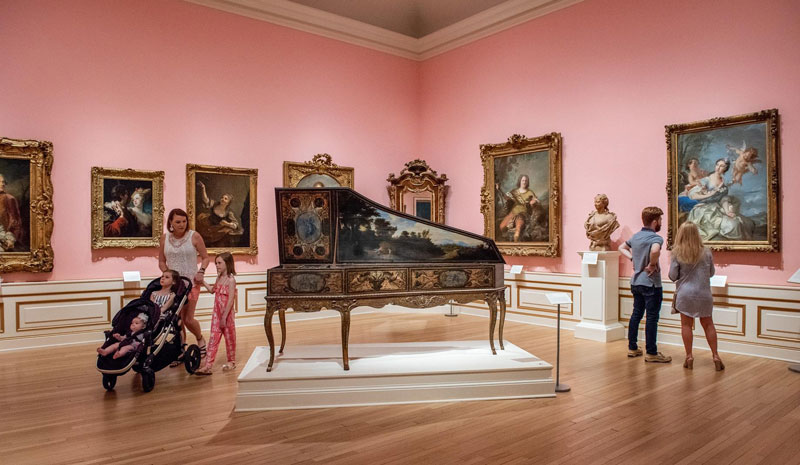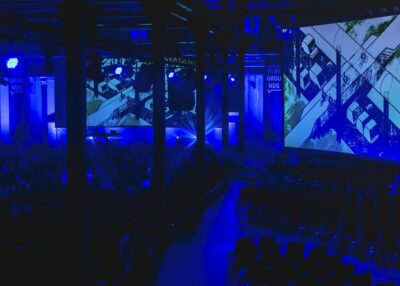6 Strategies for Growing your Museum or Art Exhibit Attendance
Running a museum or art gallery is incredibly rewarding. You get to display pieces of culture and keep history alive while envoking powerful emotions in your audience.
But, running a museum also has its challenges, like getting people into the building.
There are over 55,000 museums and 19,000 art galleries across the globe.
|
Check registration off your list Request a demo now to set up, create and start selling |
And — while many of them are probably your friends who you trade display pieces with to help you build beautiful attractions — let’s be honest— you want people at your museum or art show. You’re competing with them to some degree.
That doesn’t mean that you’re in direct competition with every other museum, but everyone want to have the best museum around.
So how do you make your museum or art display stand out in this crowded market?
How can you make yourself different from your competitors?
Here’s where you start.

1. Do competitor research
The first step towards differing from your competitors is to understand your competitors. You want to know everything.
What’s their mission?
What kinds of exhibits do they have?
What pieces are on display?
What kind of marketing campaigns are they using?
In the past, the museum space has been considered “marketing-immune.” Since everyone is a nonprofit, it can feel strange to compete.
But surviving the digital age and the current economic landscape requires you to adequately understand your competitors.
To do that, you need to research their website, exhibits, customer service, and more.
A good method to adopt is SWOT or (Strengths, Weaknesses, Opportunities, and Threats.)
What are there strengths and weaknesses, and where are they missing an opportunity that you can latch onto? Of course, you’ll also find threats.
There will be some tangible things that they do better than you. That’s ok! You aren’t looking to destroy them.
Your goal is to find the chinks in their armor and use them to explore new opportunities for your own museum.
2. Use the weaknesses of your competition
Once you know what your competitors are bad at, you can make that something that you’re good at.
Or, at the very least, figure out what you’re good at that they aren’t good at.
If that art show down the street has no digital component to their exhibit, you can create one. Invest in an amazing website and get in front of customers on social media.
That’s a weakness that you can turn into a strength.
There are millions of potential weaknesses, but we’ll list a few to watch out for:
- No digital presence and/or incorporating technology in your displays
- Lacking customer service and support
- No website OR it's not super user-friendly
- Expensive prices
- Not a good variety of exhibits
- Not offering ticket discounts (senior, student, military, etc.)
- Lacking a consistent theme (room themes, categories on display, etc.)
- Limiting hours or tour schedules
3. Work on your strengths and highlight them
If you try to reverse the logic here, you may think, “won’t my competitors identify my weaknesses and use them against me?”
Of course, they will!
But don’t worry about it.
This may sound counterintuitive, but while working on your weaknesses, don't forget to focus on your strengths instead.
Let’s use an example here.
Walmart has the lowest prices, right?
But (and let’s be honest) they don’t always have the healthiest food selection.
Whole Foods has some super expensive food, but it’s typically healthy. If either of them tries to work on their weaknesses, they lose their advantages and what makes them unique.
If Walmart gets healthier selections, its prices go up.
If Whole Foods reduces its prices, its health factor decreases.
So you have to be careful on the adjustments you make. What you change, just might be the reason people love your museum.
They can both win with a different target audience.
Figure out what your target audience wants and hyper-focus on delivering your strengths to them. Wait... you do have a target audience, don’t you?
4. Draw up a marketing blueprint
Who is coming to your museum?
Why are they coming?
What’s their goal?
What people are they?
Do they have bachelor degrees?
You want to know EVERYTHING about the type of people that show up at your museum.
Your target audience is the type of people who are most likely to come to your museum or art show.
Here are some common things you'll want to know:
- Age
- Gender
- Income
- Education
- Behaviors (or psychometrics)
- Art preferences
- Lifestyle
- Location
- Interests
-
Social platforms
As you start running marketing campaigns, sell tickets, and meet more customers (in person or online), you’ll start to narrow it down to your top marketplaces.
And, each time you do, you can use your new-and-improved target audience to deliver even more relevant messages and events customized specifically for them.
|
Create custom marketing reports Build and run your own reports, get real-time |
5. Let everyone know that you are different
Remember those strengths you have that your competitors don’t?
Make sure everyone knows about them! Incorporate your strengths into your marketing material.
You don’t have to scream, “we’re different” from the rooftops.
If you have a solid set of strengths, customers will tell that you’re different.
You just need to let them know what those are and why they should be coming to your museum.
For example, one of your strengths may be that your museum schedules free tours to walk people through the exhibits.
So how can you show that you have tours while other museums don't?
- Post the tour hours on your website so it is accessible OR during the checkout process, give users the option to sign up for a free tour. If they do sign up, you can then give them an option to share it on Facebook with friends and family.
- Go traditional and post flyers around your community or on local listings.
- Spread the word with video!! Film people experiencing tours and post to YouTube or live stream on social media.
- Give your guests something for staying for the entire tour; free merchandise, a free ticket to come back, funs prizes, etc.
6. Dig deep into your capabilities
While understanding your competitors is a key component of being, well... different from them, there is plenty of work to be done in-house.
What gold are you sitting on that you haven’t noticed yet?
What opportunities are you ignoring. Find the opportunity in your museum/art show and extort it.
Where are you located?
Maybe you're in a part of town that hosts a lot of events, has great night life, close to farmers markets, etc. What is happening where you are located and are there any opportunities you can take advantage of?
If it's by a central hub for night life and date nights, maybe you can extend your hours to accommodate them.
Are you close to farmers markets or community picnics? You can hand out fliers or business cards to people passing by at other events.
How much space do you have?
What is your venue space like? Do you have extra space you aren't taking advantage of? Try filling these spaces. (1) Build a small cafe, lounge, work space area to encourage people to stay longer, (2) Use it as an event space to host different events related to art, performing arts or based off what your museum displays. (3) Build a daycare space for kids to play while parents enjoy the museum.
There are so many ways you can take advantage of extra space to make things more accommodating for guests.
Can you create "social" environments?
When I say social environment, I mean make it social media friendly. Create photo booth walls or create fun head in the hole boards. This encourages people to take pictures of their experience at you museum and share online.
Are you hosting annual events?
Annual events create traditions for your guests; something they can look forward to each year. Whether it's celebrating your year anniversary or an annual fundraiser, it's not hard to find a reason to party.
If they aren't coming to you, bring exhibits to them.
Use your local events to set up booths and bring the art to them. This could be your chance to introduce your mission, different exhibitions, and art pieces in spaces that are comfortable and familiar to them.
You can always find ways to boost your attendance count, sometimes it just takes a little creativity to find where to start.
By stepping out of your comfort zone, you'll be surprised to find how many different strategies you can try that are effective at bringing more people in.
For more event management tips, planning advice and hacks, you can subscribe to our blog below. Good luck!










